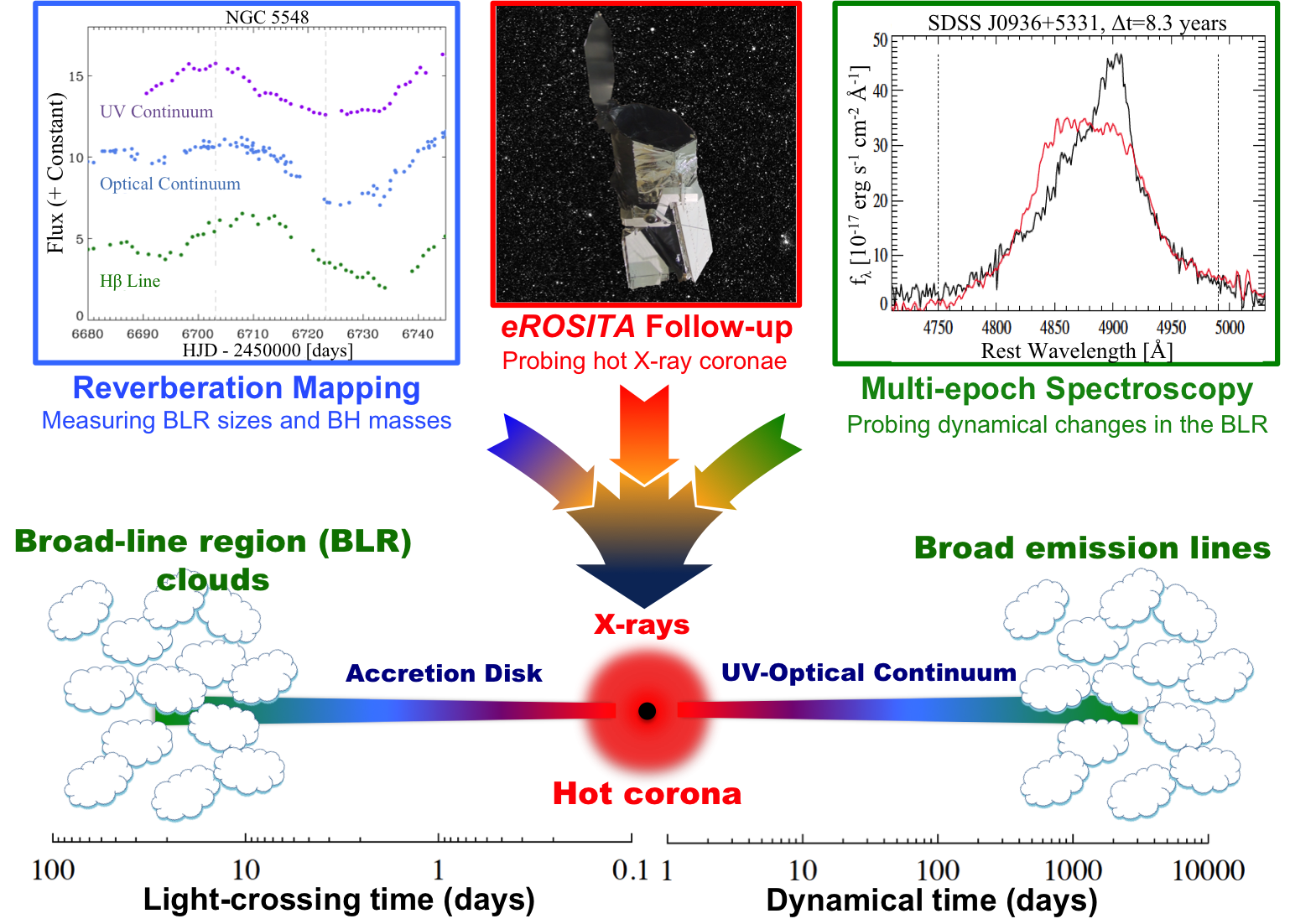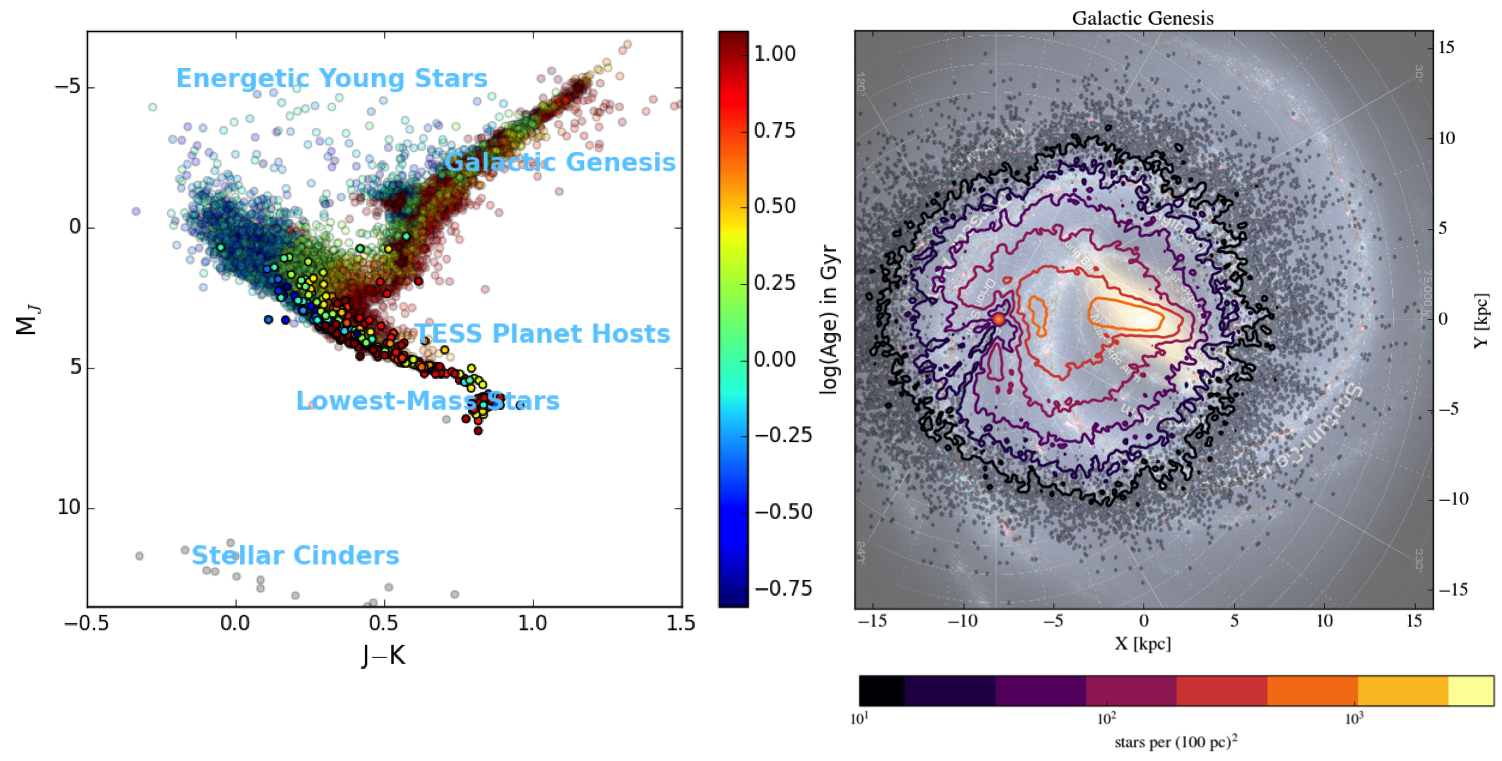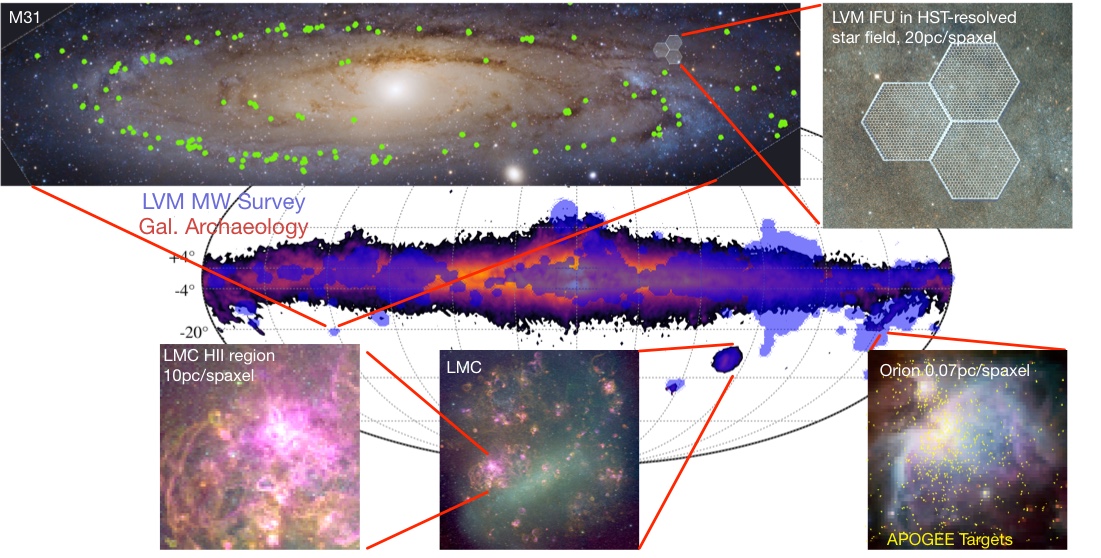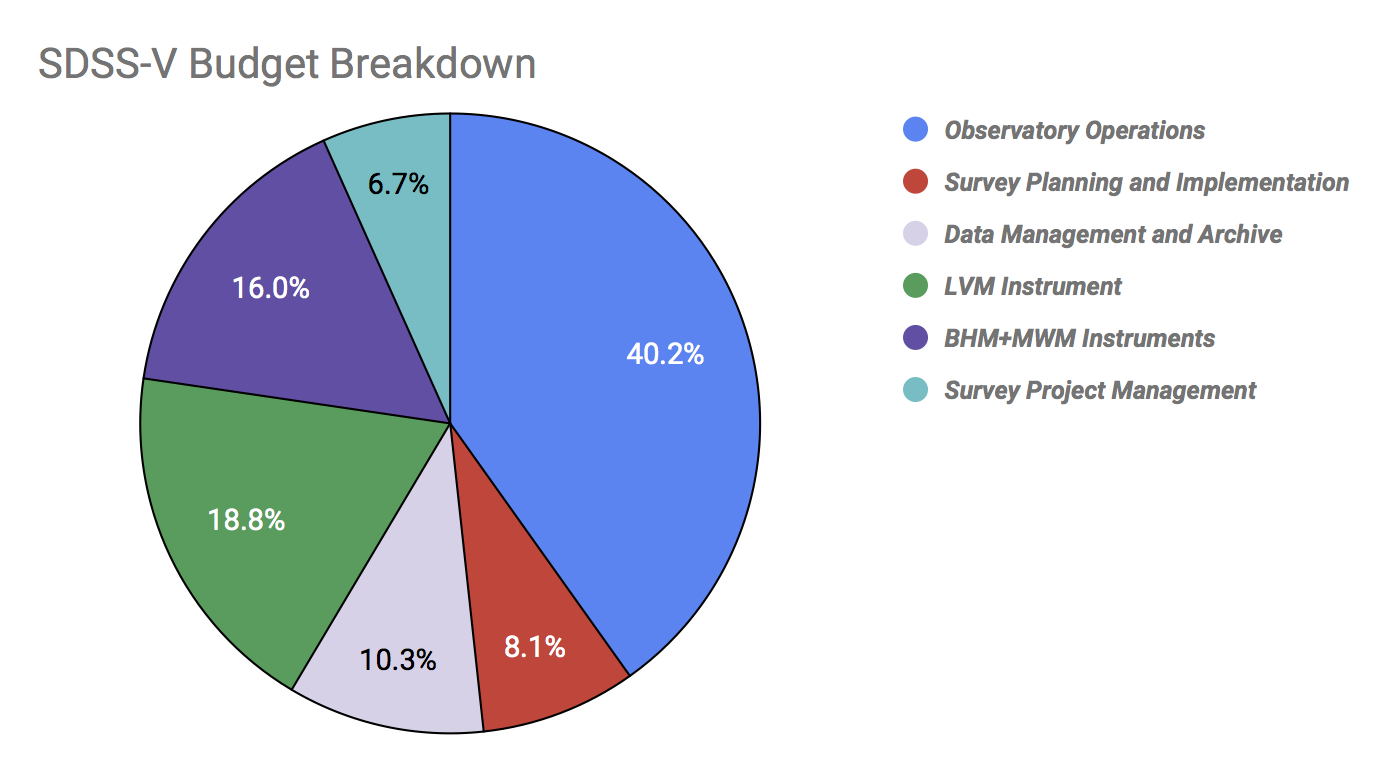SDSS and the Astro2020 Decadal Survey

Image Credit: Juna A. Kollmeier and Hans-Walter Rix
In response to the call for white papers of the Decadal Survey on Astronomy and Astrophysics 2020, SDSS submitted two papers in the category “Activity, Project, and State of the Profession Consideration (APC)”. These two papers can be accessed here:
- The Sloan Digital Sky Survey as an Archetypal Mid-Scale Program, Blanton et al., discusses recommendations for how to structure high-impact mid-scale programs based on the SDSS experience.
- SDSS-V Pioneering Panoptic Spectroscopy, Kollmeier et al., discusses the future of the Sloan Digital Sky Surveys in the upcoming decade.
The figures of the second paper can be accessed in high-resolution below. For more information on SDSS-V, we refer to the overview paper (Kollmeier et al. 2017) and the SDSS Future webpage. Current members of SDSS-V are listed at the bottom of this page.
In addition, we highlight the following science white papers that have been submitted to Astro2020 and discuss the outlook for scientific fields relevant for the science programs of the current and future SDSS:
Stars, the Sun, and Stellar Populations
- Mass Spectroscopy of the Milky Way, Dey et al.
- Evolved Planetary Systems around White Dwarfs, Gaensicke et al.
- In Pursuit of Galactic Archaeology, Ness et al.
- Stellar Physics and Galactic Archeology using Asteroseismology in the 2020’s, Huber et al.
- The Origin of the Elements Across Cosmic Time, Johnson et al.
- Fundamental Astrophysics from Stellar Multiplicity: from Precision Calibrations to Re-Ionization and Gravitational Waves, Rix et al.
- Gravity-Wave Asteroseismology of Intermediate- and High-Mass Stars, Tkachenko et al.
- Understanding the evolution of close white dwarf binaries, Toloza et al.
Interstellar Medium and Star and Planet Formation
- Mapping Gas Phase Abundances and Enrichment Patterns Across Galaxy Disks, Kreckel et al.
- Making the Connection between Feedback and Spatially Resolved Emission Line Diagnostics, Pellegrini et al.
- High-Dimensional Dust Mapping, Zasowski et al.
Galaxies
Figures
The following figures are referenced in the SDSS-V: Pioneering Panoptic Spectroscopy white paper, by Kollmeier et al.






